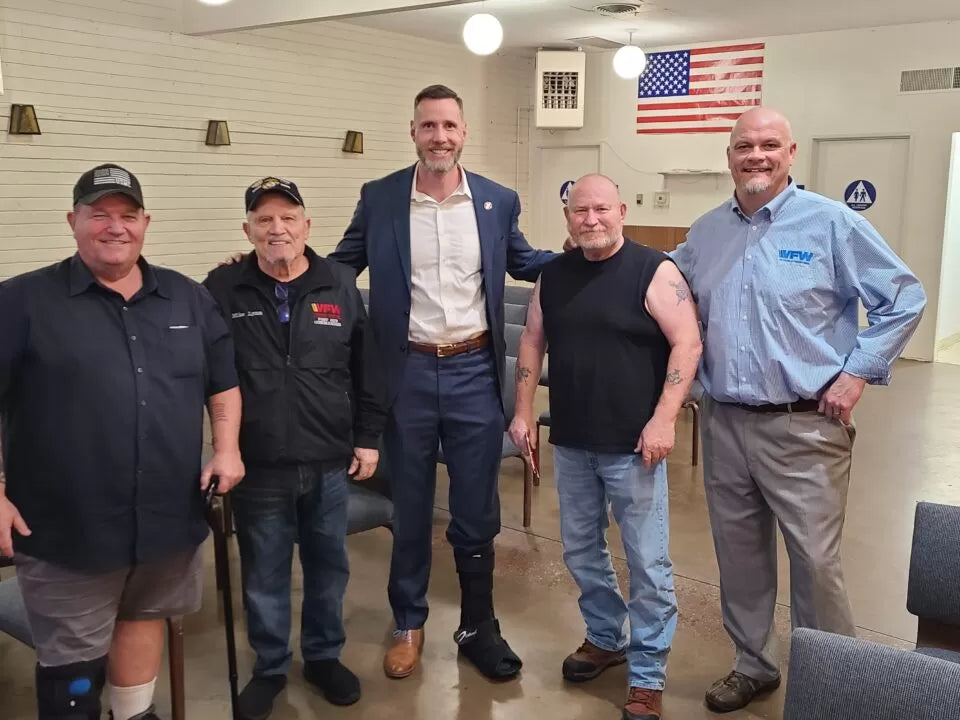Trebled Damages Against Captive Manager

(as published at “Captive International,” a London-based resource for Captive Insurance information)
In December 2022 a Memorandum and Opinion of the US District Court for the Southern District of Texas at Houston on Sullivan v Feldman, Case No. H-20-2236 (December 20, 2022), was laid down on a legal case closely connected to 831(b) issues that have hit the headlines over the past few years.
I will try in good faith to summarise this as accurately as possible, but readers can read it here.
Two Louisiana plastic surgeons were looking for a tax shelter for themselves and various of their medical-related businesses, and learned that a captive insurance company arrangement could provide them with the desired tax shelter, as well as also potentially reduce their exposure to various liabilities and losses, which was a plus.
The doctors eventually found Houston lawyer Stewart Feldman who, through a variety of his own businesses, Feldman Law Firm, Capstone Associated Services (Wyoming), Capstone Associated Services, and Capstone Insurance Management, provided just the captive and formation services desired by the doctors. Soon thereafter, Feldman and the Capstone parties tendered to the doctors an engagement letter, which they signed, along with the Capstone Services Agreement.
Through these documents, Feldman and the Capstone parties agreed to form for the doctors and the doctor entities three captive insurance companies: Cerberus CC, Janus CC, and Orion CC. The fundamental idea was that the three captives would sell insurance to the doctor entities, thus giving those entities large tax deductions, provide the doctor entities with insurance against their liabilities and losses, and the doctors would then essentially recapture the premium dollars paid tax-free because they owned the three captives, and the way the captives were taxed (or not) for income tax purposes.
The doctors later claimed that their purpose, at least in part, for entering into the deal with Feldman was that they could become involved in a risk pool, which is a mechanism used in the insurance world where the risks of various unrelated third parties are pooled together so that all the participants may provide insurance to each other, be insured by each other, and reap whatever underwriting profits the risk pool generates.
When captives are attempted to be used as tax shelters, the risk pool also tries to meet risk diversification requirements for insurance tax purposes.
Feldman and the Capstone parties ran a risk pool that Feldman used for his other captive clients, called PoolRe, and the doctor entities and the three new captives owned by the doctors were to be plugged into PoolRe. But PoolRe was structured and operated very badly by Feldman and the Capstone Parties. It was ripped apart as basically a sham by the US Tax Court in a 2018 opinion, and then the remains were utterly shredded in a 2022 opinion by the US Tenth Circuit Court of Appeals in the Reserve Mechanical case.
Learning of PoolRe’s legal annihilation in the Reserve Mechanical case, the doctors quickly figured out that PoolRe was not going to work for them either, and in 2019 requested that Feldman and the Capstone parties wind down their three captives and terminate the doctor entities’ participation in the captive arrangement. However, and this is where things really started to go sideways for all involved, Feldman and the Capstone parties refused.
Arbitrations
Procedurally, the biggest problem is that there were numerous agreements between the parties and, while they all provided for arbitration in the event of disputes, they were not at all consistent on how or where things were to be arbitrated—or even that there be a single arbitrator. This mess resulted in nine different arbitration proceedings.
Readers shall be spared the lengthy history of how all the arbitrations came about. Suffice it to say that the first arbitration proceeding was initiated by Feldman and the Capstone parties on May 7, 2020, the doctors commenced their own arbitration proceedings by the end of that month, and the parties kept initiating competing arbitrations until by the end of 2020, all nine of the arbitration proceedings were either cooking or had been started.
The arbitration proceedings were not, however, the only litigation ongoing. On June 17, 2020, the doctors sued Feldman and the Capstone parties in the Texas state court, and Feldman and the Capstone parties immediately removed the matter to the aforementioned US District Court for the Southern District of Texas at Houston (where Feldman and the Capstone parties were located), with the Hon. Lee H. Rosenthal, US district judge, left to sort out the arbitration mess. Eventually, five of the arbitration proceedings were weeded out, leaving four arbitrations to proceed to awards.
The doctors won all the arbitrations, which is to say that not one of the four arbitrators found in favour of Feldman and the Capstone parties. The awards given to the doctors by each arbitrators, and the reasons for their awards, were somewhat different and are worth summarising.
Baker award, about $1.6 million: Arbitrator Baker found that Feldman and the Capstone parties were liable “for breaching fiduciary duties, committing professional malpractice, making negligent misrepresentations or omissions, and converting funds”. Baker awarded the doctors about $1.25 million in their fees paid to Feldman and the Capstone parties, $221,005 in risk pool premiums “converted” by Feldman and the Capstone parties, and an additional $126,384 “as reasonable, necessary, and segregated fees and costs incurred by the doctors because of the Capstone parties’ sanctionable and contemptuous conduct”. Read it here.
Glasser award, about $1.5 million: Arbitrator Glasser’s award was basically the same as the Baker award, less the $126,384 in sanctions. Read it here.
Kutcher award, about $4.5 million: Arbitrator Kutcher found that the breaches by Feldman and Capstone were “serious, pervasive, and resulted in actual harm and threatened future harm in substantial amounts”. Like Baker, Kutcher found that the doctors should be awarded their $1.25 million in fees and $221,005 paid in risk pool premiums paid to Feldman and the Capstone parties.
However, Kutcher additionally found that Capstone had violated the Texas Insurance Code and thus the doctors were entitled to tripled damages, bringing the total to a little over $4.4 million, plus interest, attorneys’ fees of $126,383 and sanctions in the amount of $17,319. Read it here.
Jones award, about $88.7 million: The biggest award was from Arbitrator Jones in hearing the class action arbitration claim (yes, there is such a thing as class action arbitration) by the doctors as the representative plaintiffs for the class, which was essentially all the clients of Feldman and the Capstone parties which participated in PoolRe for 2018 and 2019.
Jones found Feldman and the Capstone parties “jointly, severally, and [solitarily] liable to [the plaintiffs and class members] for breaching fiduciary duties, committing professional malpractice, fraud, conversion, making fraudulent and negligent misrepresentations, violating the Texas Deceptive Trade Practice Act, and violating the Racketeer Influenced and Corrupt Organizations Act (RICO)”.
Jones found that the class has suffered $23.2 million in damages, plus another $221,005 in risk pool premiums to be returned, which was to be tripled under any of RICO, the Texas Deceptive Trade Practice Act, or the Texas Insurance Code, and all that comes to a little more than $70.3 million. Jones also awarded attorneys’ fees and costs of a little over $18.3 million, plus interest from July 29, 2020. Read it here.
The doctors moved the US District Court to confirm only the Jones award, being the largest award, while Feldman and the Capstone parties moved to vacate all the arbitrators’ awards except the Glasser award, being the smallest and therefore the least painful of the four.
The Federal Arbitration Act (FAA) governs the enforcement of arbitration awards in the federal courts, and essentially mandates that the court must confirm an arbitration award unless something very remiss has occurred, eg, the chosen arbitrator turned out to be corrupt, was guilty of misconduct, or exceeded his/her powers. Under the FAA, a federal court may modify or amend an arbitration award if there is an obvious miscalculation or material mistake, or the arbitrator has overreached his/her authority, or the award is somehow procedurally flawed. Otherwise, the federal court must confirm the arbitration award, and it cannot second-guess the arbitrator.
Judge Rosenthal noted that all four of the arbitrators had consistently found against Feldman and the Capstone parties for breaching their fiduciary duties, committing professional malpractice and converting client funds. She further noted that the only variations in the awards went to the damages amounts.
Objections
Not surprisingly, Feldman and the Capstone parties raised numerous objections to the Jones award being confirmed. Rosenthal shot down all these objections and confirmed the Jones award. She similarly denied the doctors’ request to vacate the Glasser award on the grounds that it was inconsistent with the Jones award, noting that inconsistency is not a ground to avoid the confirmation of an arbitration judgment. For many of the same reasons, Rosenthal also denied the motions of Feldman and the Capstone parties to vacate the Baker and Kutcher awards.
What then happened was that Rosenthal essentially found the Glasser award to be subsumed by the Jones award, such that the operative award for entering judgment was the Jones award. If by this point you are thoroughly confused as to the outcome—and why wouldn’t you be?—I will quote the summation of the court below:
“In accordance with the confirmed awards, the court grants judgment in favor of the Doctors and Class Members and against the Feldman Parties, finding the Feldman Parties jointly and severally liable to the Doctors and Class Members for: breaching fiduciary duties; committing professional malpractice; making fraudulent and negligent misrepresentations, fraud, and conversion; violating the Texas Deceptive Trade Practices Act; and violating RICO. The Feldman Parties take nothing and their claims, affirmative defenses, and all relief they sought is rejected and dismissed, with prejudice.
“The Feldman and Capstone Parties are liable to, and must pay, the Doctors and the Doctor Entities a total amount of $70,336,224.60, exclusive of attorneys’ fees and costs; pre-judgment interest; and post-judgment interest. Because Judge Jones already awarded attorney’s fees and the court has confirmed his award, the Feldman and Capstone Parties must also pay the Doctors and the Doctor Entities the attorneys’ fees and costs the Doctors incurred in the arbitration proceedings, in the amount of $18,348,294.60.
“The court imposes pre-judgment interest at a rate of 5 percent, beginning to accrue on July 29, 2020, and ending on March 28, 2022. Consistent with Tex. Fin. Code §304.003, the court awards the Doctors and the Doctor Entities post-judgment interest at a rate of 5 percent, beginning on March 29, 2022. Stewart Feldman and those in active concert with him cannot tender to the risk pool or pool participants for payment or reimbursement any portion of: (1) A.M.Y. Property & Casualty Insurance Corp’s claims; (2) the legal fees and expenses incurred in the Judge Dorfman arbitration, the arbitration proceedings, other related arbitrations or proceedings in state or federal court, and state bar proceedings; or (3) any damages award issued in the arbitration proceedings addressed in this memorandum and opinion.
“Judgment for the Doctors and Doctor Entities will be entered separately. Counsel for the Doctors and Doctor Entities must submit a proposed order to reflect and implement the relief granted and denied in this Memorandum and Opinion, no later than January 13, 2023.”
Rosenthal discussed the results of the four arbitration proceedings, but did not mention in her opinion why the arbitrators ruled as they did. There was no reason for Rosenthal to do so, since it is not the office of a federal court to inquire into the grounds for an arbitration award and thus secondguess the arbitrator’s findings and reasoning. But that leaves us in the dark about how the arbitration awards came about, and to shed light we must look at those awards.
The awards may be found here: Baker award, Glasser award, Kutcher award and Jones award. They are each several hundred pages in length, and to analyse each one would be itself a study in redundancy because they are very similar. Since it was the 273-page Jones award that ultimately drove the award in this case, we’ll focus on it. We’ll skip over the procedural stuff and instead concentrate upon what seems to me at least to be the meat of the ruling of Arbitrator Jones.
The first thing that we learn from the Jones award is that there was an arbitration hearing which was held off and on from August 3 to October 3, 2021, and that all four arbitrators who issued an award were present at the hearing. This explains why all the arbitrators’ factual findings were so similar, since they all listened to the same evidence—albeit they were each operating under different arbitration provisions and took different approaches to their final awards.
The timeline of events
The evidence showed that before coming into contact with Feldman and the Capstone parties, the doctors had already in 2011 formed three captives (Cerberus Casualty Corp, Orion Casualty Corp, and Janus Casualty Corp) in the Bahamas through another captive promoter, Peter Strauss. By 2014, the doctors were aware that Internal Revenue Service (IRS) scrutiny of captives such as theirs was increasing, and their CPA, David Kushner, put them in touch with Feldman.
At a subsequent meeting in January 2015, Feldman made his pitch as to his qualifications as a captive manager. At this same meeting, the doctors expressed concern about their ability to exit the captive insurance space quickly. Feldman responded that for the doctors to wind down their captives would be a “quick and easy process”. Remember this for later.
Ultimately, Feldman convinced the doctors to allow Feldman to conduct a health check of the doctors’ three captives, then being managed by Strauss. Later, Feldman reported to the effect that Strauss’s programme was bad, not the least of which was that the captives had been created in the fringe domicile of the Bahamas and there were serious questions about whether the Strauss programme (presumably, its risk pool) met the risk distribution requirements for US tax law purposes.
The next step, of course, was for Feldman to make his own proposal for Feldman and the Capstone parties. This proposal entailed re-domiciling the doctors’ three captives to Delaware, and the doctors’ participation in PoolRe, the risk-pooling arrangement created by Feldman and used by the Capstone parties. Feldman told the doctors that PoolRe was a much better risk pool arrangement than the one used by Strauss.
In the category of the dog that didn’t bark, Feldman did not disclose to the doctors that the IRS had by this time already examined PoolRe and determined that it did not provide risk distribution. Nor did Feldman tell the doctors that he and the Capstone parties were themselves under intense IRS scrutiny at the time. This omission by silence also becomes very important later in the Jones award.
Feldman and the Capstone parties then drafted a Joint Engagement Letter, which the doctors received and signed. In the category of missing disclosures, Feldman and the Capstone parties did not disclose that they themselves were using PoolRe for their own professional liability and negligence insurance. This also will become very important later.
After the Engagement Letter was signed, the doctors’ three captives were re-domiciled from the Bahamas to Delaware, and Feldman and the Capstone parties took over the management of those captives from Strauss. Thereafter, the doctors’ captives issued insurance policies to the doctor entities for tax years 2016, 2017 and 2018. In those same years, the doctors’ captives also participated in the PoolRe reinsurance pool. All seemed to be going just swimmingly between the parties during those years.
Then in June 2018, the nuclear bomb of the Reserve Mechanical decision exploded and scattered radiation in the form of tax troubles throughout the Feldman captive insurance empire. Reserve Mechanical was another client of Feldman and the Capstone parties, and had also participated in the PoolRe risk pool. The US Tax Court held that Reserve Mechanical’s captive was not an insurance company for tax purposes because it was not involved in “real insurance”, and therefore the deductions taken by Reserve Mechanical for its premium payments were impermissible. A substantial part of the US Tax Court’s opinion dealt with PoolRe, and that opinion held that PoolRe similarly was not an insurance company for tax purposes and did not sufficiently distribute risk for tax law purposes.
One day after the Reserve Mechanical bombshell, Feldman and the Capstone parties sent notice of the decision to all their captive clients, and the doctors discussed the decision with their other tax advisors. As crazy as it may sound now, by December 2018 the doctors had decided to go forward with the Capstone programme for 2019, including again participating in the PoolRe risk pool. By October 2019, however, the doctors had finally decided that the risk: benefit ratio of captive insurance was not tilting in their advantage, and advised Feldman of their desire to immediately liquidate and wind down their three captives, and also not to renew the 2015 Engagement Letter when it expired. Feldman immediately advised the doctors that there was an eight-step process for them to correctly wind down and liquidate their captive—by August 2021, which was about two years away and the termination date of the 2015 Engagement Letter.
So much for that “quick and easy process” that Feldman had promised the doctors before they signed up.
THE ACRIMONY CONTINUED UNTIL AT LEAST APRIL 2020, WHEN THE DOCTORS FINALLY DISCHARGED THE CAPSTONE PARTIES AS THEIR INSURANCE MANAGER The relationship between the doctors and Feldman very quickly soured, and on January 5, 2020, Feldman and his law firm (but not the Capstone parties) formally withdrew from their representation of the doctors. The acrimony continued until at least April 2020, when the doctors finally discharged the Capstone parties as their insurance manager.
The Capstone parties and PoolRe responded with an arbitration demand on May 7, 2020, and the parties then became embroiled in what was known as the Dorfman Arbitration. Ultimately, the Capstone parties and PoolRe won a ruling that they owed no contractual or fiduciary duties to the doctors to wind down their captives. That left the doctors’ tort and other claims against Feldman and Capstone, and soon the parties would again be tangled up in the arbitration knot described above by Rosenthal.
Reasons for the Jones award
All this brings us to the reasons for Jones award, which may be divided into these broad categories:
• Feldman and the Capstone parties improperly failed to disclose that, prior to the 2015 Engagement Letter, the IRS had already determined that the PoolRe risk pool did not provide risk distribution for tax law purposes;
• Feldman and the Capstone parties improperly failed to disclose at any relevant time that PoolRe was providing Feldman and the Capstone parties with their own professional negligence and related insurance coverages, such that their own clients were in effect selfinsuring themselves against any negligence or malfeasance by Feldman and the Capstone parties;
•Feldman, as the doctors’ attorney, failed in his professional duty to put in a diligent effect to wind down the doctors’ captive programme; and
• Feldman and the Capstone parties engaged in a scheme, along with PoolRe, to keep the 2018 and 2019 risk pools open so that they convert those funds to their own purposes in paying their legal expenses to fight their own clients’ claims against them.
This is a 273-page award, and pretty much every page has something juicy on it. But to cover every such nugget would likely result in an article about as long as the award itself, so here we will stick to only the juiciest of them.
In 2013, being two years before the doctors were engaged by Feldman and the Capstone parties, the IRS had already made a determination that Reserve Mechanical had failed to meet the requisites to qualify as an insurance company for tax purposes and that the PoolRe risk pool did not provide risk distribution. Moreover, by the time the doctors were presented with the Engagement Letter in 2015, the IRS had issued adverse audit examination reports with respect to six other captives that were managed by Capstone. Nonetheless, Feldman skirted around the issue of audits and failed to specifically disclose these facts to the doctors.
The Reserve Mechanical decision was not the only thing that Feldman hid from the doctors. Even worse was that on June 8, 2015—four months before he sent the Engagement Letter to the doctors— Feldman was given notice by the IRS that he was under an IRC §6700 audit for promoting abusive tax, and that the IRS was considering penalties and injunctions against him. As Jones would note: “That the consequences of a promoter audit, from the standpoint of a captive client, cannot be overstated: the commencement of the promoter audit against Mr. Feldman precludes his clients from filing a qualified amended return that would allow the clients to avoid paying accuracy-related penalties. A client can only file a qualified amended return before a promoted audit is instituted—not afterward. Moreover, the information request also provides the IRS with a play-card to identify targets for additional audits and enforcement activity.” [Emphasis in original.]
By far the worst practice of Feldman and the Capstone parties, at least in Jones’s view, was that they were using PoolRe to, basically, insure themselves against the professional negligence and related actions brought against them by their own captive clients who were participating in the risk pool. This practice had started in 2010, and was run through yet another captive personally owned and controlled by Feldman, known as A.M.Y. Property & Casualty Insurance Corporation.
The exposure of Feldman and the Capstone parties to PoolRe’s risk pool was enormous, with a business operations summary prepared by Feldman and the Capstone parties stating that PoolRe had incurred around $20 million in insured and uninsured losses, along with “very significant litigation expenses incurred”.
To look just at the time period between September 22, 2018, and July 22, 2020, Feldman and the Capstone parties had commenced eight separate arbitrations against 50 of their captive clients, 29 of these clients had made counterclaims against Feldman and the Capstone parties that were covered by PoolRe, and Feldman and the Capstone parties had submitted 23 separate insurance claims to PoolRe.
This is interesting in the context of the history of PoolRe. Between 2008 and 2016, PoolRe had no claims and no administrative expenses—$0. In 2017, PoolRe finally had some smallish claims and administrative expenses, but nothing to write home about. This all changed in 2018 as Feldman and the Capstone parties started to slam PoolRe with their own claims for $250,000. By 2019, the claims made by Feldman and the Capstone parties were a whopping $3 million. With the litigation against Feldman and the Capstone parties dramatically increasing, they needed to keep PoolRe going to pay their legal fees and expenses, and of course any adverse awards. Their first line of defence was for Feldman and the Feldman Law Firm to withdraw from their representation of the doctors, in violation (as Jones found) of their professional responsibilities to the doctors, which left the doctors without representation familiar with the Capstone structure to wind their captives down—indeed, the doctors’ captives had not been wound down by the time of the Jones. But that was only the start of the efforts of Feldman and the Capstone parties to keep PoolRe alive and paying their bills and claims.
Further findings
At the same time that Feldman and the Capstone parties were increasing their claims against PoolRe, many of their clients were refusing to further fund PoolRe.
Jones found:
“That Mr. Feldman and Capstone were in fact facing such a run on their PoolRe risk pool after the Reserve Mechanical opinion was issued on June 18, 2018. There were 68 participating captives in the 2018 risk pool as opposed to 50 participating captives in the 2019 risk pool. There was also an approximate 50 percent decrease in PoolRe’s assets and an approximate 45 percent decrease in direct written premiums to PoolRe from the end of 2018 to the end of 2019.” THEY SOON STARTED TO ENGAGE IN CONDUCT TO KEEP AS MUCH MONEY IN POOLRE AS POSSIBLE, EVEN THOUGH THAT WAS TO THE DIRECT DETRIMENT OF THEIR CLIENTS.With PoolRe dwindling in size, but with Feldman and the Capstone parties now needing PoolRe more than ever to pay their own claims, they soon started to engage in conduct to keep as much money in PoolRe as possible, even though that was to the direct detriment of their clients. One of the doctors, Houng Le, directed Capstone to close his captive, Family Casualty Corp, on January 24, 2019. Capstone’s president Jeff Carlson told the Capstone team that no action was to be taken on Le’s directive and that it was “business as usual”.
Carlson later testified that the reason the captive was not wound down was because of its obligations to the risk pool. This was just one of six captives that had demanded winding down, but were denied because Feldman and the Capstone parties wanted to keep them in the 2019 PoolRe risk pool so that they could pay their own claims against that risk pool.
The charade to keep the PoolRe risk pool open continued into 2020 as Feldman and the Capstone parties came up with the idea that in addition to claims that were outstanding, there was also the potential that they might be countersued by their clients. This was likewise asserted as a reason for keeping the risk pools open for years in which they should have already been closed. However, this reason was patently specious since the policies issued to Feldman and the Capstone parties were socalled claims made policies which required that the claims be made by a certain date, if at all. It gets even worse from there. When the doctors refused to participate in the 2020 PoolRe risk pool, the Feldman and Capstone parties backdated some of their 2020 claims to December 31, 2019, so that they could improperly tap the 2019 risk pool for 2020 claims. This was not at all difficult because Feldman and the Capstone parties were on both sides of the insurance claim: they submitted their claims on their own behalf, and then approved their claims on behalf of PoolRe.
All of this, and more, formed the basis of the Jones award described above. In the end, Jones awarded, and the US District Court confirmed, a triple-damages award totalling more than $70 million and an attorneys’ fees award of over $18 million against Feldman and the Capstone parties. Notably, the Jones award (now a judgment) also prohibits Feldman and the Capstone parties from accessing the PoolRe risk pool going forward to pay their legal expenses and claims, and since Feldman and the Capstone parties apparently had no other insurance, this apparently means that at least they will have to pay these legal fees and expenses out of their own pockets in the future.
This is not going to be the last we hear of Feldman and the Capstone parties on captive insurance issues, since there are still IRS examinations and cases involving their captive clients pending. Expect to hear much more about such creditor-debtor issues as the doctors and the class of captive clients attempt to enforce their award, and stay tuned for more.
Source: https://captiveinsurancecompanies.com/cases/feldman/Feldman_Opinion_221220.pdf
Jay Adkisson, partner, was the first Chair of the American Bar Association's Committee on Captive Insurance, and has twice been an expert witness to the U.S. Senate Finance Committee.





Jay Adkisson
Author